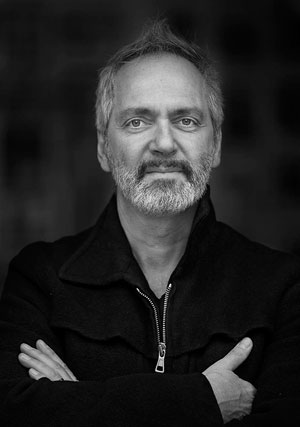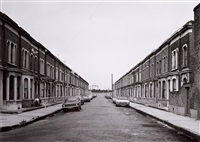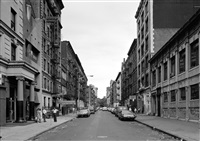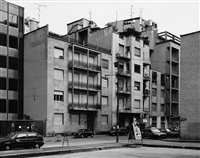Introduction
Many of the photographers associated with new topographic including Robert Adams, Lewis Baltz, Nicholas Nixon and Bernd and Hiller Becher, were inspired by the man-made, selecting subject matter that was matter of fact.
A turning point in the history of photography, the 1975 exhibition New Topographic signalled a radical shift away from traditional depictions of landscape. With its stark yet oddly romantic images of American factories, intersections and trailer parks, William Jenkins’s 1975 exhibition rewrote the rules of landscape photography.
An exhibition at the International Museum of Photography in Rochester, New York featuring these photographers also revealed the growing unease about how the natural landscape was being eroded by industrial development.
On the one hand, New Topographic represented a radical shift by redefining the subject of landscape photography as the built (as opposed to the natural) environment. To comprehend the significance of this, it helps to consider the type of imagery that previously dominated the genre in the United States.
What the new topographic a reaction to?
Their stark, beautifully printed images of this mundane but oddly fascinating topography was both a reflection of the increasingly suburbanised world around them, and a reaction to the tyranny of idealised landscape photography that elevated the natural and the elemental.
Typologies
A photographic typology is a single photograph or more commonly a body of photographic work, that shares a high level of consistency. This consistency is usually found within the subjects, environment, photographic process, and presentation or direction of the subject.
Definition- 1 : study of or analysis or classification based on types or categories. 2 : a doctrine of theological types especially : one holding that things in Christian belief are prefigured or symbolised by things in the Old Testament. Other Words from typology Example Sentences Learn More About typology. The photographic typology has the ability to reshape perception, heighten and focus attention, and transform everyday objects into a thing of art. Ironically the process and execution, often cold and systematic can be extremely emotive, and a powerful tool of communication when contextualised.

Bernd and Hilla Becher
Who created typology in photography? The German artists Bernd and Hilla Becher, who began working together in 1959 and married in 1961, are best known for their “typologies”—grids of black-and-white photographs of variant examples of a single type of industrial structure.
Bernhard “Bernd” Becher, and Hilla Becher, née Wobeser, were German conceptual artists and photographers working as a collaborative duo. They are best known for their extensive series of photographic images, or typologies, of industrial buildings and structures, often organised in grids.

Bernd and Hilla Becher first began their still-ongoing project of systematically photographing industrial structures – water towers, blast furnaces, gas tanks, mine heads, grain elevators and the like – in the late 1950s.
I like how these objects are placed how normal passport photos, this along with the black and white images gives the image an old fashion feel despite it not being very old at all. This gives the image depth and authenticity and I think that the contrast between the different shapes makes the image more interesting, You can also notice that the more cylinder shapes are symmetrical to each other with the forth and sixth images being simirla to each other, and the same goes for the first, third, seventh and last image.
Image Analysis

I have selected this image of Bernd and Hilla Becher’s as I think that the grid layout of twelve and not nine makes for a more interesting image as there is more to looks at, and their is more opportunity to create more affective images as part of the final piece. Firstly, I think that the fact that these images are in black and white means that the image may appear more authentic and this highlights the different shadows and shapes within the water towers, for example the squares in the 8th image. Furthermore, the variety of shapes within this image creates a more exciting image, meaning that the contrast between the circles, rectangles and the cylinders placed next to eac other creates depth to the image.











































































.jpg?mode=max)














